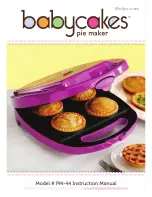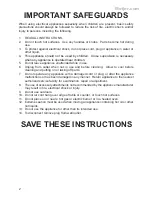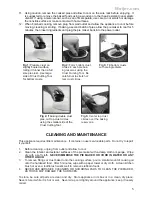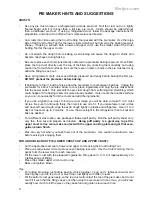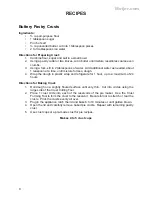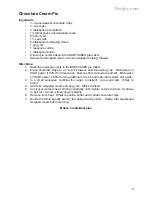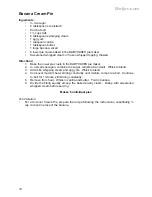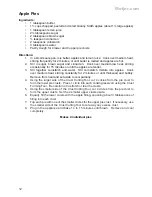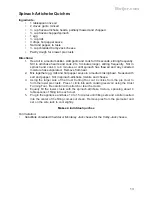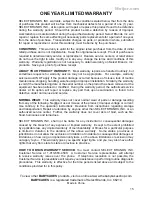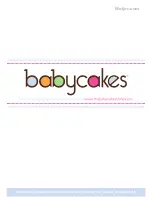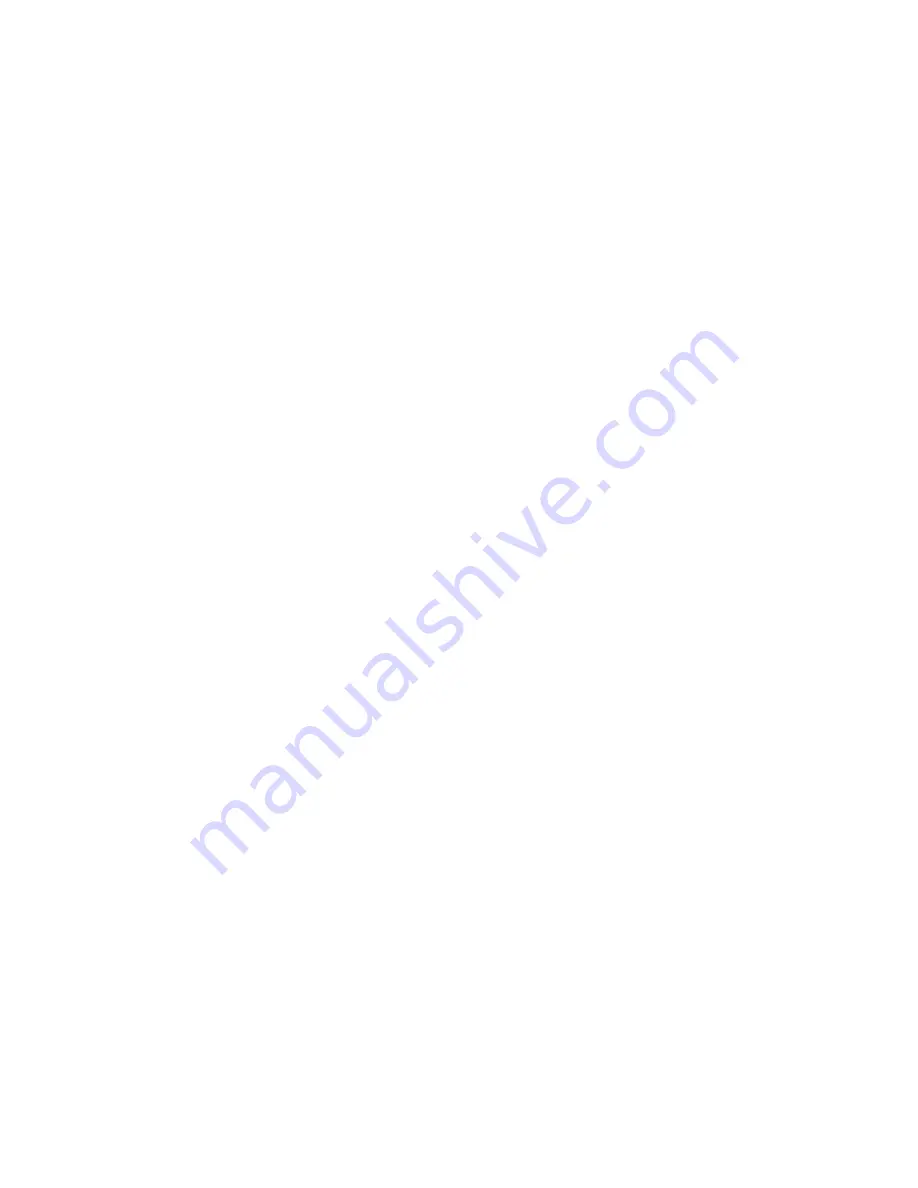
6
PIE MAKER HINTS AND SUGGESTIONS
CRUSTS:
•
Use any pie crust recipe or a refrigerated pre-made pie crust. Roll the crust out on a lightly
floured board until it is thinner than a full size pie crust. Crusts should be rolled thinner
than a traditional pie crust. If using a refrigerated crust, follow the package instructions for
preparation, and allow it to soften at room temperature as directed.
•
Cut crusts into circles using the Crust Cutting Tool packed with the pie maker. Use the large
side of the Crust Cutting Tool for the lower crusts (which will be formed to the baking reservoir
shape). If baking a pie with both a lower and upper crust, use the smaller side of the Crust
Cutting Tool for the upper crusts.
•
Do not stretch the dough before baking as stretching will cause the dough to shrink and
become misshapen during baking.
•
Be sure to place each crust circle directly centered in a pie maker baking reservoir. Once filled,
place the top crust directly over the top of the filled pie, centering them carefully and using
caution not to touch hot surfaces. Be sure there are no tears or holes in the pie crust as it may
allow the filling to seep out.
•
Have all ingredients (both crusts and fillings) prepared and ready before baking the first pie.
DO NOT
preheat the pie maker before baking
.
•
If baking more than 1 batch of pies, allow the pie maker to cool between batches. Unplug the
pie maker for about 5 minutes, allow to cool, place ingredients and plug the pie maker back
into the power outlet. This prevents the pie crust dough from softening and stretching, which
could happen if the baking reservoirs were already heated. It also cools the nonstick surface
so you can conveniently form the crusts and add the ingredients.
•
If you use a typical one-crust, 9-inch pie crust recipe you will be able to make 5 to 6 crust
circles. Be sure to roll dough thinly, then reroll to use all of it. If you make fewer crust circles
and have left-over dough, wrap the extra dough tightly in plastic and refrigerate. Use in 1 to 3
days or freeze for up to 2 months. To use, thaw overnight in the refrigerator, then roll out and
bake as desired.
•
For a different crust option, use packaged, thawed puff pastry. Roll the puff pastry sheet very,
very thin, then cut and prepare as directed.
Using puff pastry is a great way to get the
upper crust to rise more, make contact with the upper cooking plate and get that even,
golden brown finish.
•
Pies are very hot when you take them out of the pie maker. Use caution and allow to cool
before serving or enjoying them.
FOR A DOUBLE-CRUST PIE (LOWER CRUST CUP AND UPPER CRUST):
•
Cut the appropriate amount of lower and upper crusts using the Crust Cutting Tool.
•
Place one large lower circle crust over each baking reservoir. Use the Crust Forming Tool to
gently form the lower crust to each reservoir.
•
Fill the lower crust with the prepared ingredients, filling about ½ to ⅔ full (approximately 2 to
4 tablespoons of filling).
•
Place the smaller upper circle crust on top.
•
Bake until golden brown.
Tips:
•
For added browning, just before baking, whisk together 1 egg and 1 tablespoon water and
brush lightly over the top crust or brush top crust lightly with milk or cream.
•
Fill the bottom crust generously, so the top crust will contact the top of the pie maker, but do not
over fill it such that the filling seeps out. After using the pie maker a time or two, you will know
exactly how much to fill the pies so they bake full and golden brown each time.
Meijer.com
Summary of Contents for PM-44
Page 1: ...Meijer com ...
Page 16: ...16 Meijer com ...

